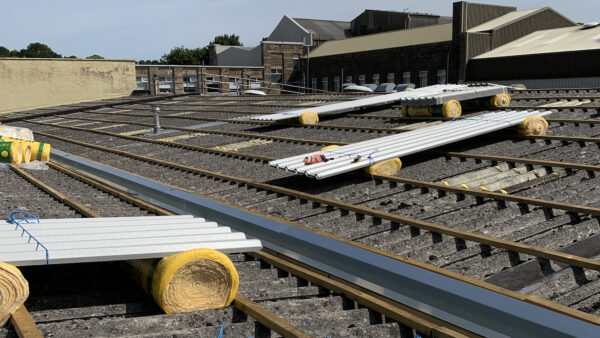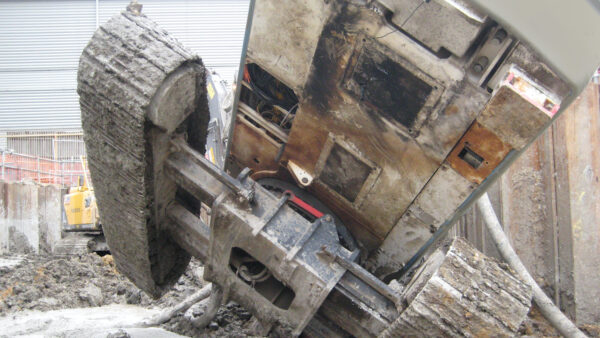
Cross-bred miscanthus has structural and environmental capabilities, reports Stephen Cousins
Researchers in Wales have developed a more sustainable form of straw bale construction using a hybrid grass they say could decarbonise the industry at scale.
Miscanthus is grown as a biomass energy crop for use in coal-fired power stations and currently covers more than 8,000 hectares of marginal land in the UK.
Scientists at Aberystwyth University, working in collaboration with miscanthus supply chain development firm Terravesta, found that by cross-breeding different varieties of the grass it attained properties suitable for construction, including low U-values and structural rigidity.
As perennial crop, miscanthus’s root structure holds soil together in winter, preventing soil erosion and reducing flood risk, compared to annual crops, such as wheat grass used in straw bales.
Levels of carbon sequestration are comparable, or higher, than wheat, helping reduce embodied carbon in building, said researchers. In addition, it can be grown on low grade marginal land not suitable for food production, making it a good option for farmers struggling to grow barley, oil seed rape, or wheat, increasing potential for large-scale harvesting for construction.
Judith Thornton, research development officer for agriculture and environmental sciences at Aberystwyth University, told CM: “As an annual arable crop, wheat straw has environmental problems, using miscanthus in bales is a good way of diversifying its potential end uses. It is a relatively low cost construction material for potentially large-scale use, there are hundreds of straw bale buildings going up every year.”

Miscanthus (below) used in bales (above) and to construct a house (top)

This year’s harvest was used by Terravesta to bale up enough two-string bales to build a two-storey house, employing the same technique used to build conventional wheat straw bales.
Now the firm is looking for an investor interested in building the first ever miscanthus house, or commercial building, using the bales, which it would donate.
There is also scope to create larger Heston sized bales suitable for use in larger, commercial buildings and warehouse spaces that require a permanently ambient temperature.
Miscanthus bales would more than satisfy building regulations in the UK, in terms of structural capability, as building blocks and insulation values, said Bee Rowan, straw bale building course leader at the Centre for Alternative Technology, based in Machynlleth, Wales: “In terms of compression requirements, acoustics and ‘healthy internal environment’ stipulations, miscanthus complies. We know we can build load-bearing miscanthus walls using the traditional straw bale building method, and the surface can directly take internal clay plaster and external render.”
Plant breeding scientists at Aberystwyth University are currently investigating other seed-based miscanthus hybrids suitable for different building materials, including insulation.
This may result in specifiers being able to order bespoke-designed plants for specific applications, said Thornton: “Today you can get insulation made of hemp or flax, and plant-based fibre board panels and renders, but none of those have had the plant specifically designed for the end use. In future, an architect or contractor could go to a plant breeder and ask them to design a plant with specific characteristics for materials, that conversation has never been had before.”
The history of miscanthus in the UK goes back around 15 years, when Defra was seeking a biomass alternative to burning coal in power stations. The grass is native to Asia and has evolved separately on many different islands with contrasting environmental conditions, soil types and altitudes.











Please keep me informed of other developments re miscanthus. I wish to build a small structure in 2017 with straw-bale construction.
Pakistan has a tremendous potential for growing this grass and use it for low cost housing for the poor. Please help us in growing this grass and then giving us the technology for housing. Another very important point is can this be made fire proof?